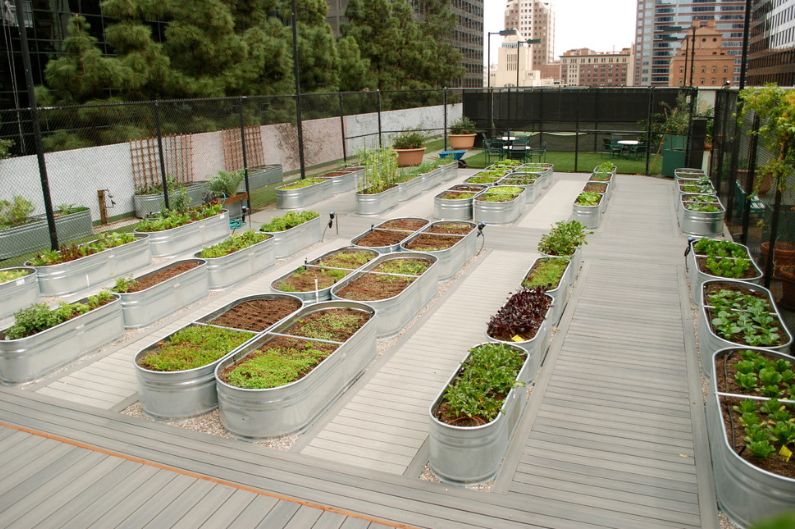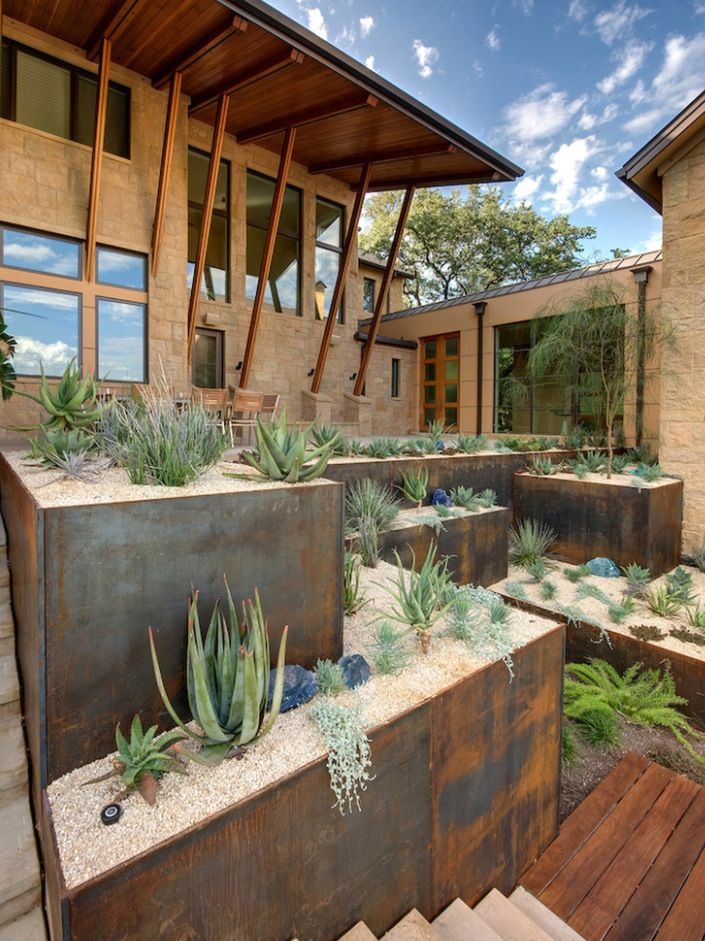Container Gardening – How Do You Pick Your Planters?
It's easy to get confused when shopping for planters or containers for your garden. Container gardening is not easy since in that location are many different types and a diverseness of materials to choose from and they have their own set of pros and cons to consider. And so how practice y'all make a decision? Well, at that place are a few points to consider such every bit cost, Eco-friendliness, style, longevity and size. The material from which the planter is made tends to be the principal element which influences such equally conclusion so let's have a expect at a few options before exploring the bailiwick whatsoever further.
Metal containers
I of the best things virtually metal planters is that they're very durable and don't chip, fissure or break. This makes them actually bully for the garden. However, they provide little insulation and heat upward rapidly and then keep that in mind especially if yous want to place them in direct sunlight. Virtually metal planters become more beautiful over time, crumbling with a nice patina. This makes them very attractive and wonderful decorations for the garden. Keep in heed, however, that metal is a not-porous textile and then drainage tin be a problem in some cases.
 View in gallery
View in gallery  View in gallery
View in gallery  View in gallery
View in gallery  View in gallery
View in gallery  View in gallery
View in gallery  View in gallery
View in gallery  View in gallery
View in gallery  View in gallery
View in gallery  View in gallery
View in gallery  View in gallery
View in gallery  View in gallery
View in gallery  View in gallery
View in gallery Forest planters
There's a great flexibility associated with wooden planters in general. They tin can be easily made to size and tin either be store-bought or built at home. They provide adept insulation and they're quite cheap compared to other types. However, some pests mat have up residence inside so keep that in heed. You lot also need to be careful when watering the plants since too much moisture can cause the wood to rot. Lift upwards the planters from the ground to provide acceptable drainage. Wooden planters withstand cold really well and are also durable and good-looking, often adding a nice rustic affect to the décor.
 View in gallery
View in gallery  View in gallery
View in gallery  View in gallery
View in gallery  View in gallery
View in gallery  View in gallery
View in gallery  View in gallery
View in gallery  View in gallery
View in gallery  View in gallery
View in gallery  View in gallery
View in gallery  View in gallery
View in gallery  View in gallery
View in gallery  View in gallery
View in gallery  View in gallery
View in gallery Stone and concrete containers
Natural stone planters and garden containers are ever full of graphic symbol. Stone and rocks always bring uniqueness to a design. Such planters provide groovy insulation and terminal for a very long time. Their solid bodies brand them stand out in a uncomplicated and natural style. A lot of such planters are made from a combination of limestone and fiberglass for a more lightweight and waterproof structure. Stone containers can exist quite expensive and sometimes cheaper alternatives get bachelor, these being made of false rock and more lightweight.
 View in gallery
View in gallery  View in gallery
View in gallery  View in gallery
View in gallery  View in gallery
View in gallery Terracotta pots
Even though they are very popular and probably the most commonly used type of planters, terra cotta pots also come with a whole list of disadvantages. They don't usually provide adequate drainage for the planters and they cheap and crack hands. They also retain heat for long periods of fourth dimension which is not always beneficial for the plants. In addition, if yous accept the plants placed directly in a terracotta pot, it will most probable stain the planter. They absorb mineral salts from soil and h2o and this causes unaesthetic stains on the exterior. Even so, they are very affordable and actually piece of cake to customize using paint.
 View in gallery
View in gallery  View in gallery
View in gallery  View in gallery
View in gallery  View in gallery
View in gallery Porcelain and other contemporary options
One of the bug with porcelain planters used outdoors is the fact that they tin easily cleft when the soil freezes or expands so keep that in mind especially if you lot're living in a zone with cold conditions. Porcelain planters, like the ones made of concrete or terra cotta, draw wet from the soil and dry more than quickly than other types. This ways that the plants require more frequent watering. They can also require more maintenance than others. An advantage is the fact that they're available in a big variety of colors and in lots of interesting shapes and sizes.
 View in gallery
View in gallery  View in gallery
View in gallery  View in gallery
View in gallery  View in gallery
View in gallery  View in gallery
View in gallery  View in gallery
View in gallery  View in gallery
View in gallery  View in gallery
View in gallery Source: https://www.homedit.com/container-gardening/












0 Response to "Container Gardening – How Do You Pick Your Planters?"
Post a Comment